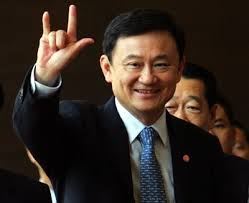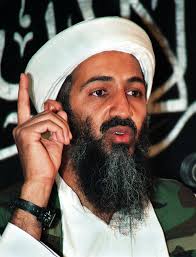| A brief history of the dramatic and violent changes that took place as the Yugoslav Federation disintegrated during the 1990s.
1991-1992: DISINTEGRATION
Yugoslavia was first formed as a kingdom in 1918 and then recreated as a Socialist state in 1945 after the Axis powers were defeated in World War II.
The constitution established six constituent republics in the federation: Bosnia-Hercegovina, Croatia, Macedonia, Montenegro, Serbia and Slovenia. Serbia also had two autonomous provinces: Kosovo and Vojvodina.
By 1992 the Yugoslav Federation was falling apart. Nationalism had once again replaced communism as the dominant force in the Balkans.
Slovenia and then Croatia were the first to break away, but only at the cost of renewed conflict with Serbia.
The war in Croatia led to hundreds of thousands of refugees and reawakened memories of the brutality of the 1940s.
By 1992 a further conflict had broken out in Bosnia, which had also declared independence. The Serbs who lived there were determined to remain within Yugoslavia and to help build a greater Serbia.
They received strong backing from extremist groups in Belgrade. Muslims were driven from their homes in carefully planned operations that become known as “ethnic cleansing”.
By 1993 the Bosnian Muslim government was besieged in the capital Sarajevo, surrounded by Bosnian Serb forces who controlled around 70% of Bosnia.
In Central Bosnia, the mainly Muslim army was fighting a separate war against Bosnian Croats who wished to be part of a greater Croatia. The presence of UN peacekeepers to contain the situation proved ineffective.
1995: DAYTON PEACE DEAL
American pressure to end the war eventually led to the Dayton agreement of November 1995 which created two self-governing entities within Bosnia – the Bosnian Serb Republic and the Muslim(Bosnjak)-Croat Federation.
The settlement’s aims were to bring about the reintegration of Bosnia and to protect the human rights but the agreement has been criticised for not reversing the results of ethnic cleansing.
The Muslim-Croat and Serb entities have their own governments, parliaments and armies.
A Nato-led peacekeeping force is charged with implementing the military aspects of the peace agreement, primarily overseeing the separation of forces. But the force was also granted extensive additional powers, including the authority to arrest indicted war criminals when encountered in the normal course of its duties.
Croatia, meanwhile, took back most of the territory earlier captured by Serbs when it waged lightning military campaigns in 1995 which also resulted in the mass exodus of around 200,000 Serbs from Croatia.
1999: KOSOVO INTERVENTION
In 1998, nine years after the abolition of Kosovo’s autonomy, the Kosovo Liberation Army – supported by the majority ethnic Albanians – came out in open rebellion against Serbian rule.
The international community, while supporting greater autonomy, opposed the Kosovar Albanians’ demand for independence. But international pressure grew on Serbian strongman, Slobodan Milosevic, to bring an end to the escalating violence in the province.
Threats of military action by the West over the crisis culminated in the launching of Nato air strikes against Yugoslavia in March 1999, the first attack on a sovereign European country in the alliance’s history.
The strikes focused primarily on military targets in Kosovo and Serbia, but extended to a wide range of other facilities, including bridges, oil refineries, power supplies and communications.
Within days of the strikes starting, tens of thousands of Kosovo Albanian refugees were pouring out of the province with accounts of killings, atrocities and forced expulsions at the hands of Serb forces.
Returning them to their homes, along with those who had fled in the months of fighting before the strikes, became a top priority for the Nato countries.
Meanwhile, relations between Serbia and the only other remaining Yugoslav republic, Montenegro, hit rock bottom, with Montenegrin leaders seeking to distance themselves from Slobodan Milosevic’s handling of Kosovo.
2000-2003: MILOSEVIC OUSTED
Yugoslavia has disappeared from the map of Europe, after 83 years of existence, to be replaced by a looser union called simply Serbia and Montenegro, after the two remaining republics.
The arrangement was reached under pressure from the European Union, which wanted to halt Montenegro’s progress towards full independence. However, Montenegrin politicians say they will hold a referendum on independence in 2006.
The death of Yugoslavia is only one of many momentous changes that have occurred since the end of the Kosovo conflict.
Slobodan Milosevic lost a presidential election in 2000. He refused to accept the result but was forced out of office by strikes and massive street protests, which culminated in the storming of parliament.
He was handed over to a UN war crimes tribunal in The Hague, and put on trial for crimes against humanity and genocide.
Kosovo itself became a de facto UN protectorate, though some powers have begun to be handed back to elected local authorities. One of the main problems in the province is getting Serbs who fled as Yugoslav security forces withdrew in 1999, to return to their homes.
Conflict between Serbs and ethnic Albanians threatened to erupt in late 2000 in the Presevo valley, on the Serbian side of the Kosovo border, but dialogue between Albanian guerrillas and the new democratic authorities in Belgrade allowed tensions to evaporate.
There was, however, a major outbreak of inter-ethnic violence in the former Yugoslav Republic of Macedonia in 2001, again involving the Albanian minority. This was contained by Nato peacekeepers and ultimately resolved by political means.
2006: DEATH OF MILOSEVIC
Slobodan Milosevic was found dead in his cell in The Hague on 11 March 2006.
His long-running trial had been hit by repeated delays – partly because of his poor health – and no verdict had been reached.
A Dutch investigation concluded that he had died of a heart attack, dismissing claims by his supporters that he had been poisoned.
He was buried in his Serbian home town, Pozarevac, but the Serbian government had refused to allow a state funeral.
Serbia meanwhile came under intense international pressure to find and hand over General Ratko Mladic, the former Bosnian Serb commander topping the UN tribunal’s list of wanted war crimes suspects, alongside his fugitive wartime political ally Radovan Karadzic.
Belgrade’s failure to catch Gen Mladic set back its hopes for eventual EU membership, as the EU decided to suspend talks on forging closer ties.
In Kosovo reconciliation between the majority ethnic Albanians, most of them pro-independence, and the Serb minority remained elusive.
Several rounds of UN-mediated talks have been held, without any significant breakthrough. The UN wants to find a solution for Kosovo’s disputed status by the end of 2006.
The state union of Serbia and Montenegro is all that remains of the federation of six republics that made up former Yugoslavia – but in a referendum on 21 May, Montenegro narrowly voted for independence from Serbia.
Montenegro’s Prime Minister Milo Djukanovic led the campaign for independence, although the population was deeply divided as there are close cultural links between the two peoples.
|



 Slobodan Milosevic was a Serbian and Yugoslavian president who was born on August 20, 1941 in Pozarevac, Serbia. He worked as a businessman in the economic and banking sectors before delving into politics in 1983. He was elected as Serbia’s president in 1989 and founded the Socialist party. In 1997, he became Yugoslavia’s president and was involved with the Kosovo crisis and NATO confrontation. He lost power in 2000 and was charged with crimes against humanity. Milosevic died on March 11, 2006.
Slobodan Milosevic was a Serbian and Yugoslavian president who was born on August 20, 1941 in Pozarevac, Serbia. He worked as a businessman in the economic and banking sectors before delving into politics in 1983. He was elected as Serbia’s president in 1989 and founded the Socialist party. In 1997, he became Yugoslavia’s president and was involved with the Kosovo crisis and NATO confrontation. He lost power in 2000 and was charged with crimes against humanity. Milosevic died on March 11, 2006.





